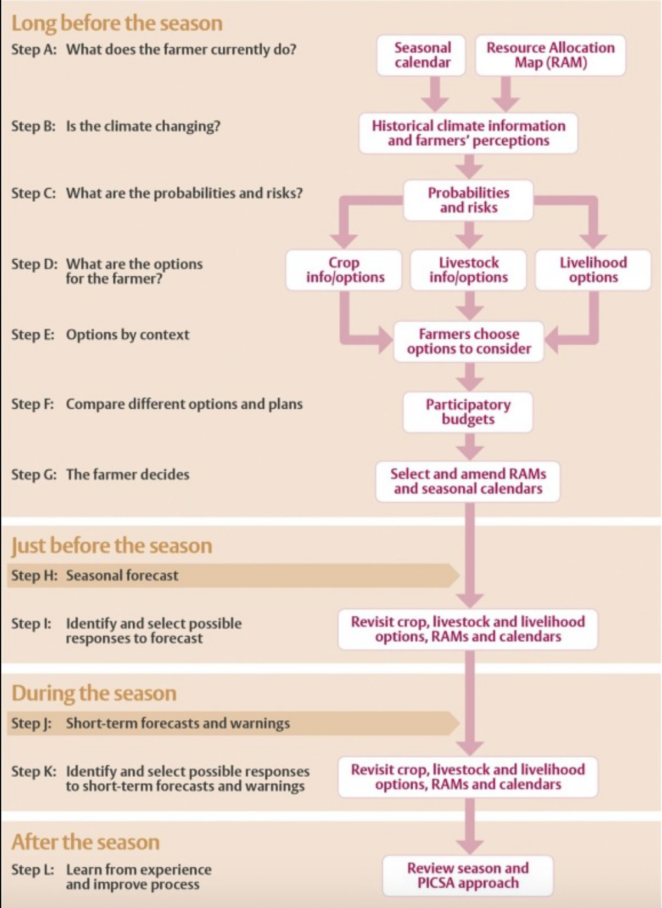The PICSA Approach

Introduction
Participatory Integrated Climate Services for Agriculture (PICSA) is a participatory agricultural extension approach, developed by researchers at the University of Reading. PICSA aims to support smallholder farmers to make informed decisions, under variable and changing climatic conditions. It does this through combining:
- accurate, locally-specific climate and weather information,
- locally relevant crop, livestock and livelihood options, and
- participatory decision-making tools.
The Challenge
Smallholder farming is vital for the food security and livelihoods of millions of people across the developing world. However, critical farming decisions depend on highly variable climatic factors such as the amount of rain that falls, extreme temperature, the timing of seasonal changes, as well as the occurrence of extreme conditions like dry spells and floods. Farmers thus face substantial risks and difficult decisions when planning their activities.
The PICSA Approach
PICSA places farmers at the centre of its approach, and helps them to address the above challenges through integrating:
- Communicating historical climate information, as well as seasonal and short term forecasts, in a way that is relevant and useful for farmers.
- Exploring crop, livestock and livelihood options available to farmers that may help them deal with climate and weather-related challenges.
- Using participatory decision-making tools that assist farmers to make informed decisions when planning their activities.

PICSA promotes farmer empowerment through two guiding principles:
- ‘The Farmer Decides’ – farmers have all the responsibility and have to face the consequences of the farming decisions they take. The decisions should thus be made by farmers themselves.
- ‘Options by Context’ – different farmers have different contexts. This includes differences in wealth, education, land, goals and attitudes to risk. Therefore, what works for one farmer might not work for another. Farmers should thus make decisions that are right for them.
In practice, 12 logical steps make up the PICSA approach. Agricultural field staff implement these steps with farmers, starting long before the growing season, then continuing shortly before, during, and after the season. Click here for more resources.
The PICSA Field Manual
The PICSA Manual is a detailed and comprehensive step-by-step guide for using PICSA with farmers. It is primarily for use by agricultural extension staff and staff from non-governmental organisations who work directly with farmers.
The manual contains activities with activity sheets and they are broken down into clear and logical steps. Each step builds on what has been covered in the previous steps. The first steps focus on what farmers are doing now and how climate and weather influence this. The following steps then enable you to help farmers to use a range of sources of climate, weather, crop, livestock and livelihood information for their planning and decision making.
This process can be divided into 12 steps:

The manual is available in four different languages: English, Bengali, French, and Spanish.
Download the manual from the links above or the right-hand column.
(0) Comments
There is no content